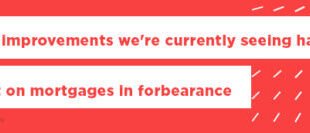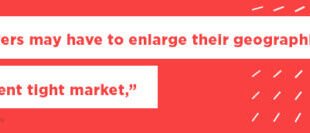
With interest rates at historic lows, many homeowners are considering mortgage refinancing. A typical refinancing entails closing out your original loan and opening another — same principal balance financed at new terms and a better rate.
A cash-out refi is different. It allows a homeowner to borrow some money and refinance a mortgage simultaneously. In a nutshell, it’s like refinancing your mortgage, adding a home equity loan or line of credit (HELOC), and receiving a fat check at closing. The balance owed on your refinanced loan will equal the amount you owed on your old mortgage plus the amount borrowed, so you’ll end up owing more overall, and you’ll need to cover closing costs and fees, typical with any refinanced or new home loan.
How much can you borrow with a cash-out refi?
That depends on a variety of factors, including how much of the principal you’ve already paid down. A cash-out refi can pay you any amount within your current home equity, which is the difference between the mortgage balance and your home’s actual value. Depending on your situation, cash-outs are generally limited to about 80% of your home’s equity. You can never cash-out 100%.
To qualify, you must have at least some home equity. If you’ve been making mortgage payments for only a year or so, you may not have much home equity built up yet, as your first few years of mortgage payments generally go more towards paying off interest nibble away less at the principal. But if you have several years of mortgage payments under your belt, a cash-out refi might be an option.
Do the math
When considering this type of refinancing, you’ll want to consider the cash-out refi requirements as well as the cash-out refi closing process.
Hypothetically, imagine your home is worth $ 400,000. If you still owe $ 300,000 on your loan, you’ve built up $ 100,000 in home equity, or 25% of the home’s value. Lenders will likely want at least 20% equity to remain after refinancing, so that would leave you with 5% or $ 20,000 available to borrow. Your new mortgage would be for $ 320,000 ($ 300,000 for the home loan plus $ 20,000 borrowed), and you’ll receive a $ 20,000 check at closing.
Don’t forget, as with any refinancing there are closing costs to consider. These can range from 2% to 6% of your loan amount, depending on your loan size. Your loan officer can tell you if you can roll closing costs into the total loan amount.
Why take out a cash-out refi?
Like a kid in a candy store, it can be way too tempting to borrow as much as possible in a cash-out refinance. Just remember that this is still a loan that must be repaid. Determine exactly how much you need and resist borrowing any more.
There are plenty of reasons homeowners might want to tap into their home’s equity. They usually fall into a few main buckets.
- Home improvements: Maintenance and repairs aren’t cheap. Installing a new roof or adding an extra bathroom are great reasons to borrow against your home equity.
- Outdoor upgrades: A new patio or inground pools can increase the value of your property, as can tree removal and landscaping.
- Automation: From video security systems to smart fridges in the kitchen to connected thermostats, window blinds and lighting, smart technologies in the home are changing how we live.
- Going Green: Solar panels, cool roofs, tankless water heaters and double-pane windows can reduce utility bills while increasing your home’s value.
- Consolidating debt: Rolling credit card bills and other high-interest loans into a single, low-interest payment can make debt so it’s easier to pay it off.
- Health care: Unexpected surgery, extended rehab stay, and long-term care can result in high medical bills.
- Life events: It’s nice to dream about a wedding day, a vacation, or a kid’s college education but how will they be funded?
Cash-out refinance pros and cons
Because each payment made against your mortgage adds a little to your home’s equity, your home acts sort of like an investment account. It might even have more value! Think of a cash-out refi as a way of making a withdrawal.
Some advantages:
- A cash-out refi is a cost-effective way to borrow money as interest rates for refinancing tend to be lower than for regular mortgages
- A cash-out can help free up your budget to alleviate any financial strain
- If you use the cash-out to pay off debt with higher interest rates, the amount borrowed is stretched over a longer period, so payments are more manageable
- Mortgage interest can be tax-deductible, so by rolling other debt into your loan, you may be able to deduct paid interest. Speak to your tax professional, though!
Some disadvantages:
- You’re paying closing costs on the entire loan amount, not just the remaining principal
- You’ll need to commit to a new time frame — or term — to pay your mortgage off
- When your original loan closes, your payment history stops being reported so your credit score may dip (but it’ll bounce back when payments hit the new loan)
Consider a cash-out refinance
If you have budget concerns, refinancing your loan could be the answer, especially since interest rates are currently at historic lows. If you purchased a home a few years ago, you might be able to benefit from a cash-out refinance.
Speak to a loan officer in your area to see if you qualify, if closing costs make sense, and if you should go with a regular refinance program or a cash-out refi.



